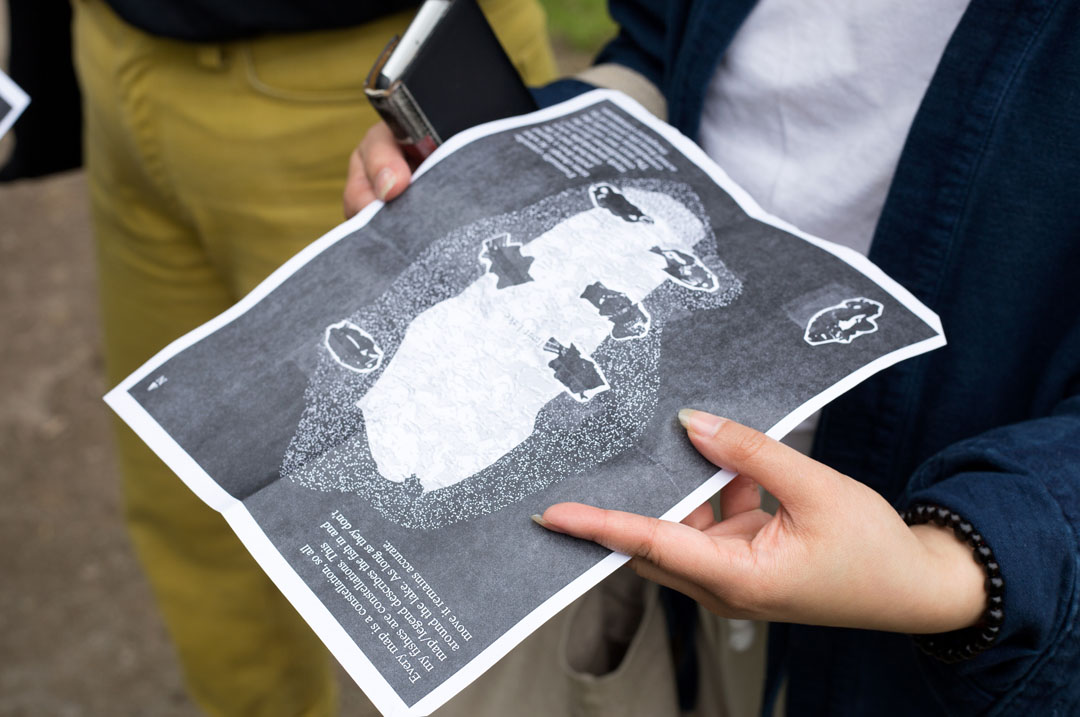Trout Lake Constellations (as part of Clues)
May 18 - June 8 2018
Duplex & Trout Lake
Vancouver, British Columbia









Including: Kristina Banera, Hannah Doucet, Katrina Mendoza, Michael Mogatas, John Patterson, Rachael Thorleifson
Images can optically disorient. Illusions can be “solved” by focusing on the physical reaction to actions within the image. The movement defines the image-space as a potential space of action.
In a different space, a subject oscillates, in futile gestures, between resistance and losing control. As we leave an experience, a shape represents a feeling. The shape creates an intense sensation of intervention. The intervention becomes externalized from the body that experiences it.
In an unwilling exchange with a contaminated environment,the glass-like substance broke through her hands. Glass chunks collected by her father from the factory are remnants of another body affected by place.
A clothesline pole sways precariously. Objects depicted are aligned with exits which are possible points of intrusion after dark. Preventatives are assembled to ward off the worst, however effective they were historically. An event appears truncated in its retrospective representation but is, hopefully, kept true.
Objects are made to fill in feelings surrounding the personal events of others. Histories are lost and, without explanation, images remain and the line between reality and mental space becomes blurred. Abstraction occurs via dislocation in the form of producing objects based on other objects. The removal and placement of objects into other spaces and times partially suspends entropy and inevitable loss.
Objects and images, whether in original or iterative form, help to locate possible moments in time. Objects or images aid an attempt to search for unknowns. Around these clues an environment, along with the motives and feelings that existed within it, is reconstructed. Successful reconstruction is partial but satisfactory.
Clues are not only tools for reverse-engineering memories but also for engineering feelings, actions, and reactions. In Clues, an invention or artifact becomes a locator for new realities, actions, and experiences.
In the work Trout Lake (Constellations), a series of laser-cut steel 'fish' were placed around Trout Lake in Vancouver. A map with the locations of the fish was supplied at the gallery, and a guided walking tour occured around the lake on May 19.
Every Map is a constellation, so all my fishes are constellations.
This map / legend describes the fish in and around the lake.
As long as they don't move it remains accurate.
Eventually constellations change.
At what point does a legend conclude
and is the myth unspeakable when the constellation dissolves?
The story may outlive the constellation
and make the actual form (the points of its inception) extraneous.